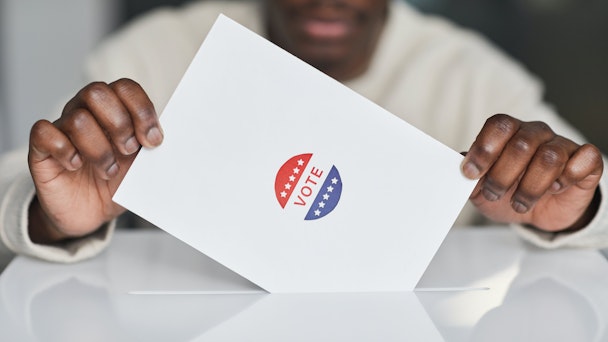Advertising amid political polarization: insights from The Drum, The Independent and others
What are the opportunities and challenges that marketers face in an era fraught with divisive headlines and high-stakes elections? The Drum’s Kendra Barnett, The Independent’s Blair Tapper and other experts convene to explain how brands can succeed in today’s hyper-polarized climate.

'Politics, Conflict and Media' explores the implications each digital platform has for advertisers
'Politics, Conflict and Media' explores the implications each digital platform has for advertisers. International conflicts, rampant misinformation and forthcoming election cycles dominate today’s digital zeitgeist, raising myriad brand safety concerns for advertisers.
Delving into the intricacies of this turbulent marketing environment, Kendra Barnett, senior reporter at The Drum, moderated ‘Politics, Conflict and Media,’ a panel of industry leaders including Blair Tapper, senior vice-president, US, at The Independent; Hanna Kahlert, cultural trends analyst at Midia Research; Alex Thomas, director of brand safety and responsible investment at GroupM; and Mallory Newall, vice-president of public polling at Ipsos.
Below are a few insights distilled from the discussion.
Advertising in Election Season
Half of the world will run to the polls this year, with major elections scheduled in the US, the UK and beyond. This climate presents complex implications for advertisers and brands. In an increasingly polarized and politicized landscape, consumers often perceive brands through a partisan lens, and thus, expect them to take more public stances on political issues.
“In the US, everything at this point is looked at through a partisan lens and even brands are starting to be identified as, ‘Are you team red or team blue?’ And, I think that has real implications for brands and advertisers alike,” said Mallory Newall, vice-president of public polling at Ipsos. “If a company takes a stand on an issue that may be controversial, I want them to own it. I want them to stick with it. So, I think authenticity is really key in this hyper-polarized, increasingly politicized landscape ... So, understanding who it is you’re trying to reach, what they believe in, I think that’s really key.”
Social Media as a News Source
The conversation then pivoted to the current social media landscape, which has evolved from a source of entertainment to one of information. According to Hanna Kahlert, cultural trends analyst at Midia Research, roughly one quarter of social media users utilize social platforms for educational purposes, and one-third of users rely on them for news.
Advertisers may seek to reach these demographics; however, it's important to be aware that an algorithm might place their ads next to a news story that doesn’t align with their brand values or other types of undesirable content. “This is a very challenging environment, not just for brands, but for anyone trying to compete for time and attention in this digital space,” she added.
On social media, advertisements share space with user-generated content, which can range from deepfakes to AI-generated content. This can be damaging to not only political discourse, but also a brand’s reputation.
“When we have these major global events – whether that be global elections, international conflicts and so on – they definitely do bring some unique circumstances and challenges for media buying,” said Alex Thomas, director of brand safety and responsible investment at GroupM. “One example being, how to manage and approach mis and disinformation ... That kind of content can be very, very harmful.”
A Safer Alternative?
In a landscape where trust is a precious commodity, this raises the question: can brands find a more secure advertising platform? According to Blair Tapper, a sophisticated publisher like The Independent can provide advertisers with a more reliable and safe environment.
“As a publisher, the onus is on us to give those assurances back to partners,” she said. “I think being ahead of [AI], both journalistically and commercially as a publisher, is critical. We know what AI can do; we know that it can alter images, create images, make an advertisement look like an event that never even took place, change people's words. It's very, very scary ... I think it is critical to ensure that as a publisher, we remain firm in our deliverance of authoritative and credible journalism – and a site experience.”
For more, visit The Drum TV to see 2024 predictions content here.
Advertisement
Advertisement
Suggested newsletters for you
Content created with:

The Independent
The Independent has been at the front line of journalism since 1986, with its purpose to challenge, debate - and make change happen - way ahead of its time. It is...
Find out more
